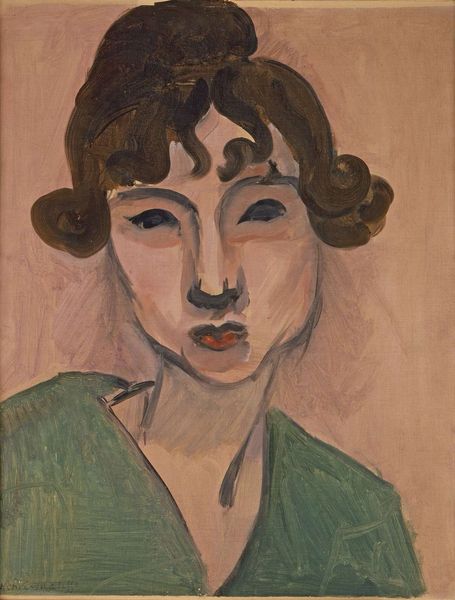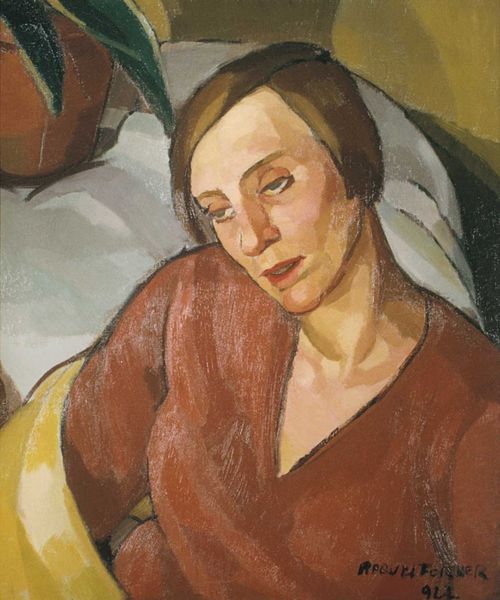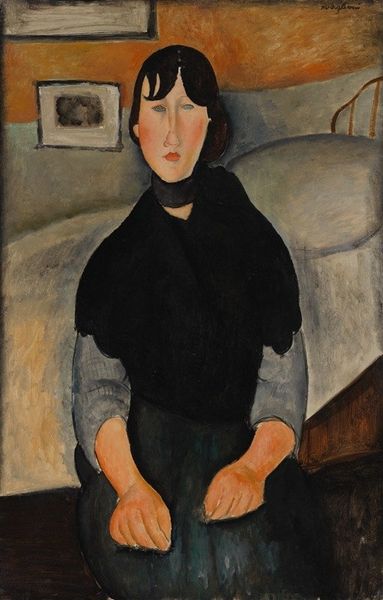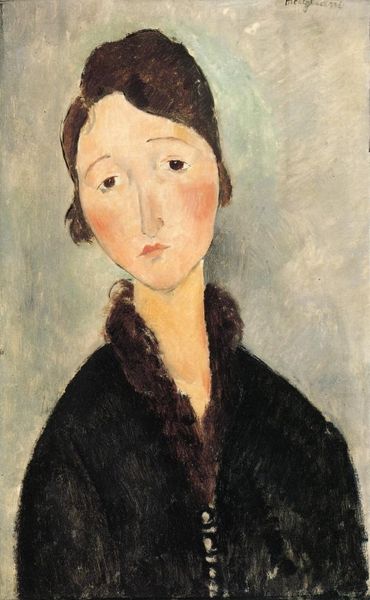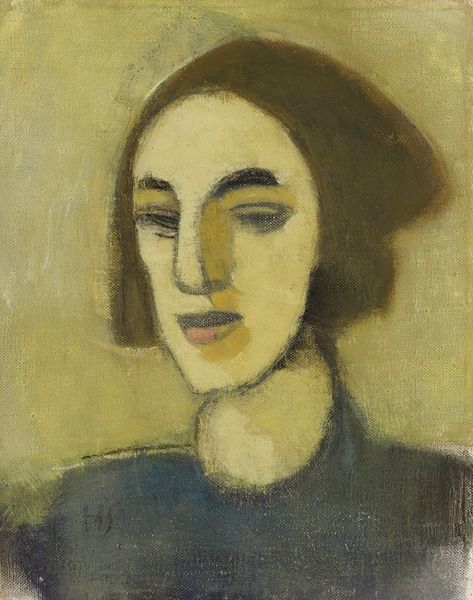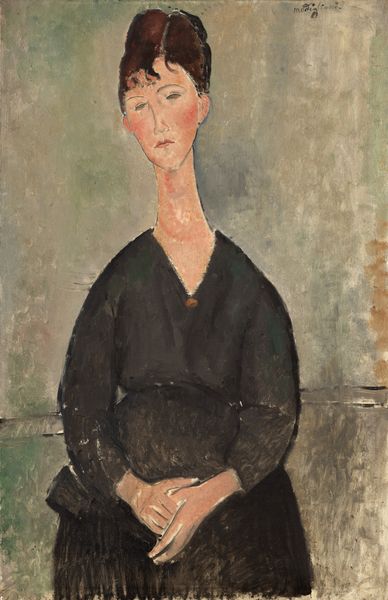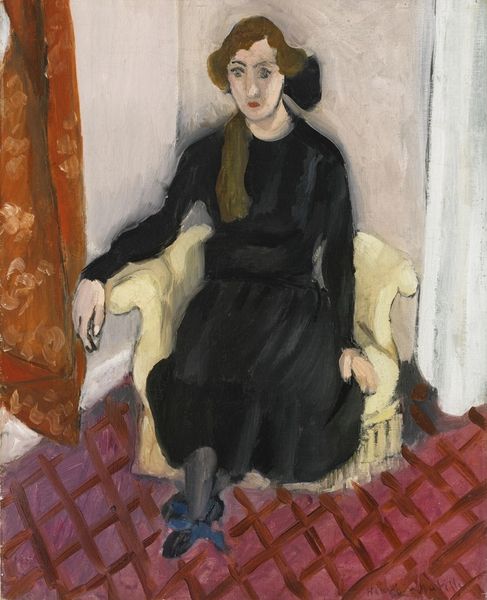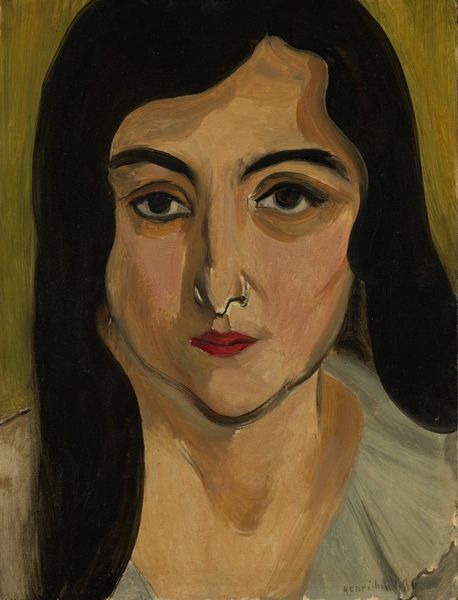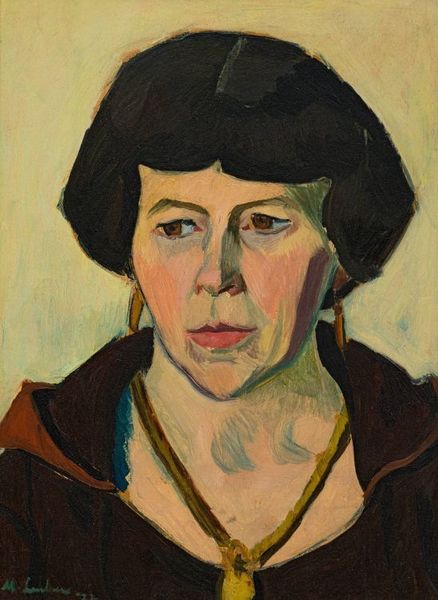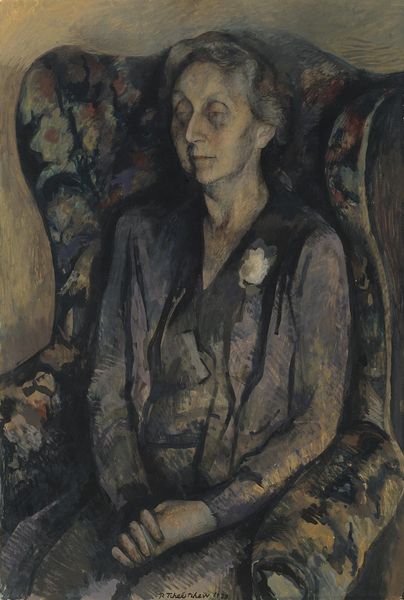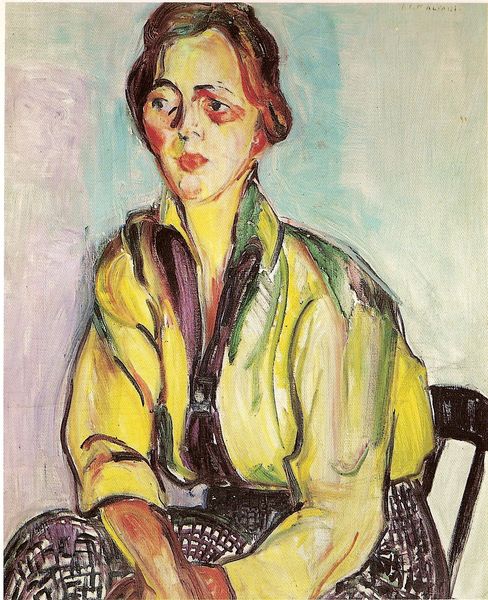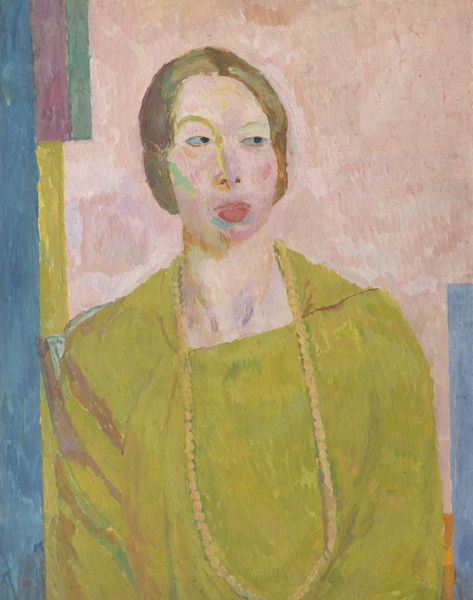
Copyright: Modern Artists: Artvee
Editor: Here we have Henri Matisse’s "Femme aux roses", created around 1919, using oil paint. The somber palette is so unexpected from Matisse. The simplified forms almost feel… melancholy, I guess? What do you make of it? Art Historian: That’s an interesting initial reaction. The 'melancholy' you perceive likely stems from several elements embedded in its historical context. While Matisse is celebrated for vibrant colors, it’s important to remember that 1919 was shortly after World War I. How do you think that socio-political landscape might have influenced artists, including Matisse? Editor: Well, the world was reeling from loss and destruction… So, maybe artists moved away from the bright, optimistic pre-war styles. Was there a change in what art was trying to *do*? Art Historian: Precisely! There was a grappling with reality, and a re-evaluation of aesthetic values. Consider also the institutional forces: Which kind of art was being promoted in galleries after the war? What kind of subjects were favoured by collectors? The directness in her gaze challenges the conventional, passive portrayal of women we often see, too. Notice her severe gaze; there's almost a tension between her forward look, and the flatness of the application, wouldn't you say? Editor: I do see that! Like, is it a ‘real’ portrait, or a study in form? It is interesting how those roses, normally a symbol of joy, seem more like a prop, drawing a sharp contrast with her look. I’m glad I asked – that puts so much in perspective! Art Historian: It speaks to the complexities of art’s role after immense social upheaval. Editor: I'll definitely view Matisse differently now!
Comments
No comments
Be the first to comment and join the conversation on the ultimate creative platform.
